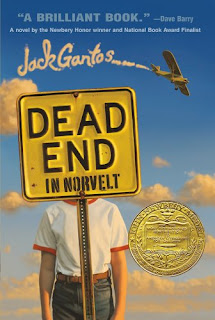A Ball for Daisy by Christopher Raschka (2012 Caldecott Medal Winner)
Generally a Caldecott winner is picked because of the combination of image and text. In this case, though, there are no words. I was surprised by this narrative choice, but it works out extremely well. Although there are no words, it isn't very hard to figure out the story.
I took this to the day care where I work, and "read" it with one of the classes, and worked with them to tell the story. It worked out great. Even at 3-4 years of age, they had little trouble working out the story.
So what is the story? Daisy is a dog with a red ball. Daisy really loves her ball, and doesn't really want to be without it. One day, Daisy's owner takes her to the park. They play catch, and have a great time until another dog gets Daisy's ball. While this other dog is playing with the ball it bursts. Daisy is heartbroken and is miserable until the next day when they go to the park and the girl that owns the other dog offers Daisy and new blue ball.
All of this story is done without a single word. There isn't even a sound effect for the ball popping. It is just a great example of visual story telling that can be a great lesson for kids. This is something that has been popping up in shorts before animated movies this past summer, where there are shorts with little to no words, maybe just some sound effects. This allows children to practice creating a story.
Check out this book for yourself, and any kids in your life.






